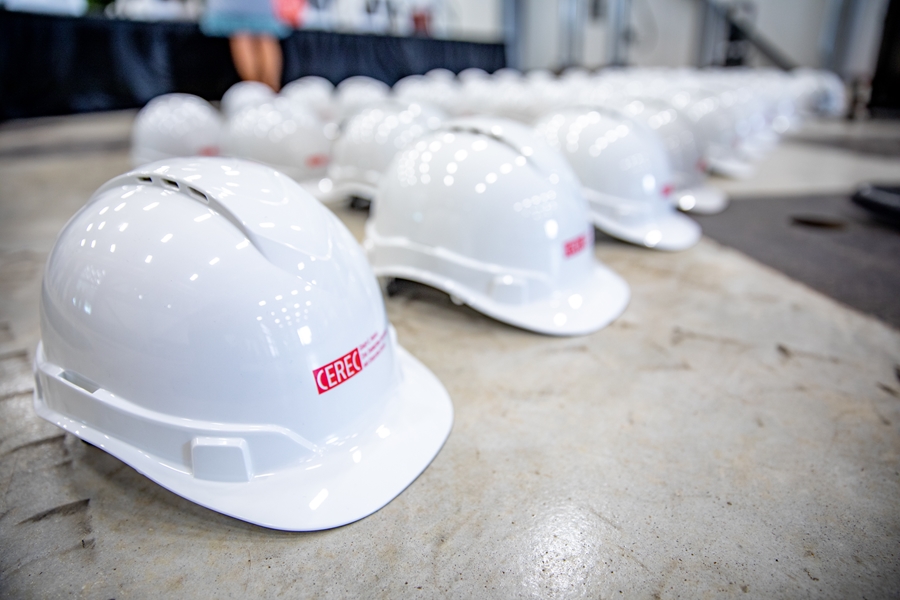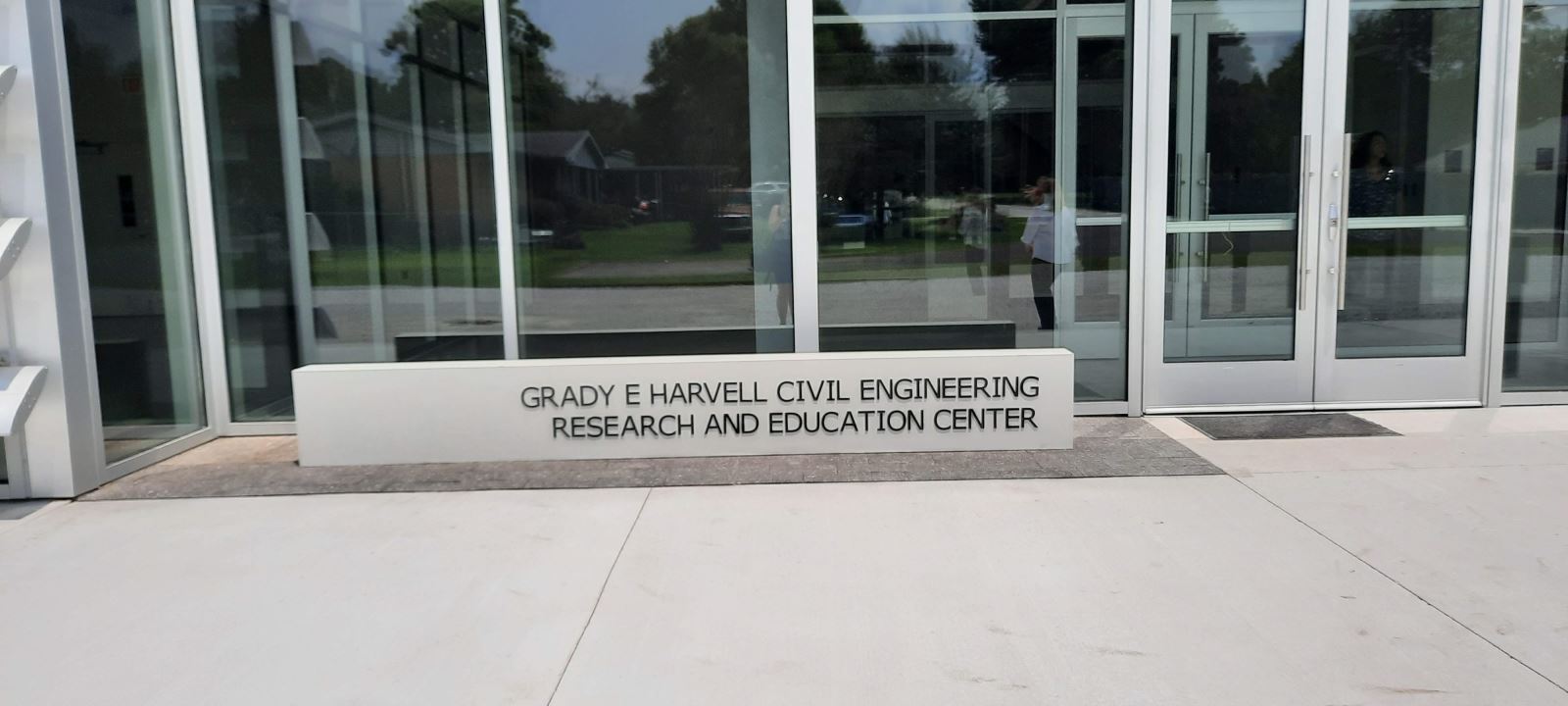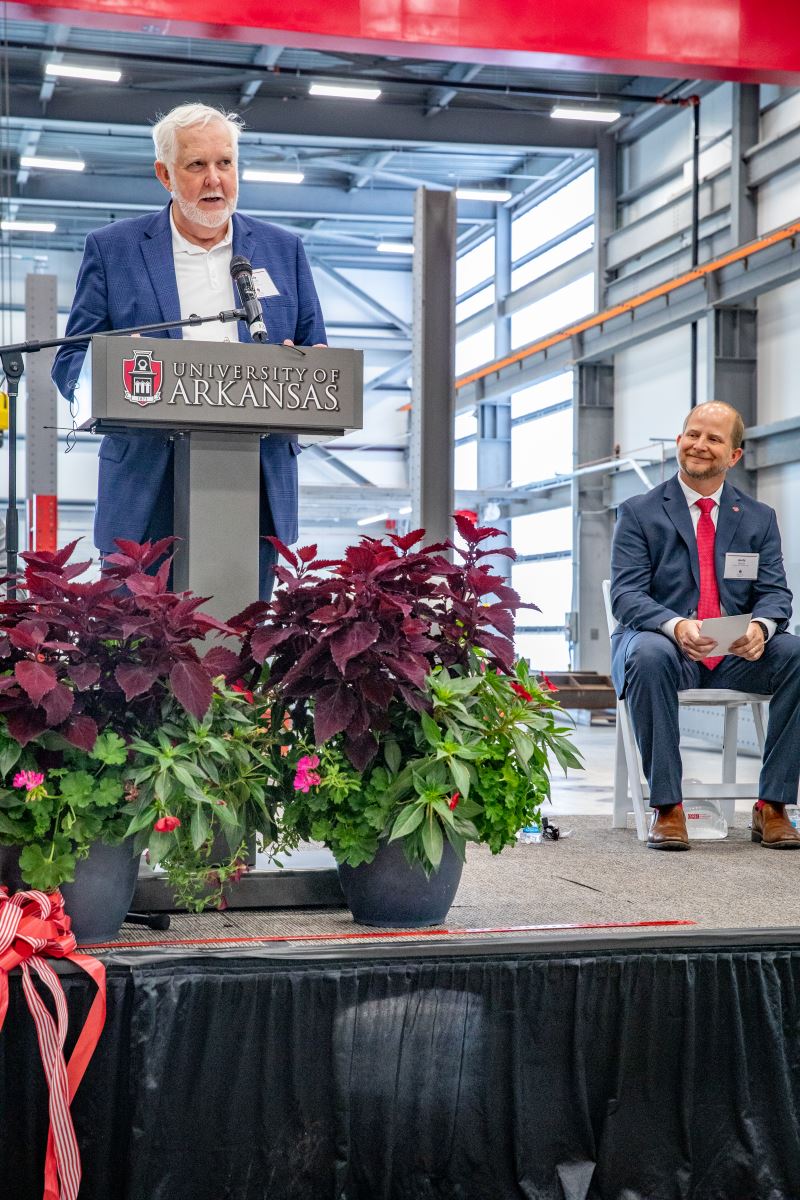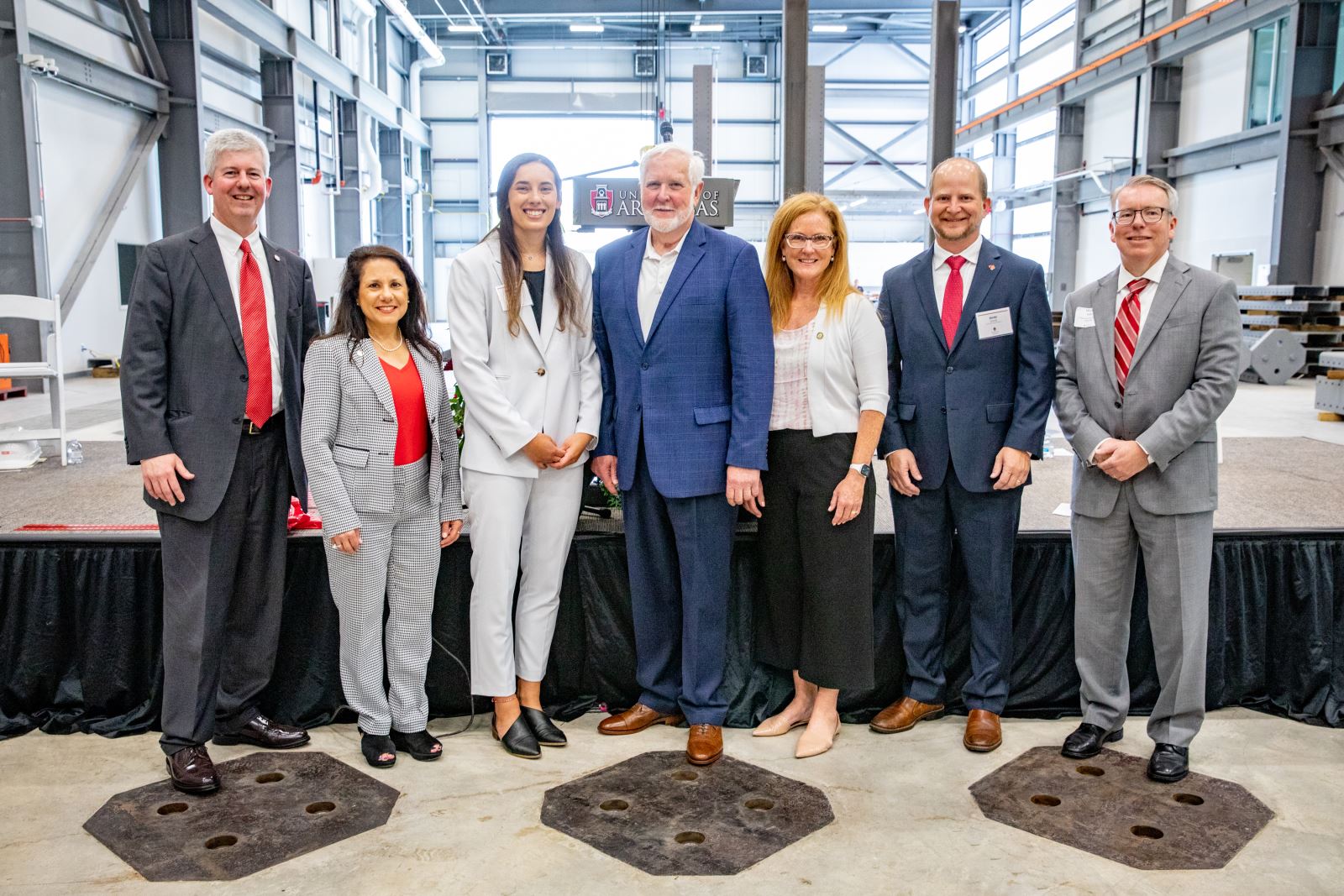
The Civil Engineering Department and the College of Engineering at the University of Arkansas celebrated the completion of the Grady E. Harvell Civil Engineering Research and Education Center, or CEREC, on July 20. First conceived as a project goal by the Arkansas Academy of Civil Engineering in 1999; the goals for CEREC are providing a facility that will allow students and faculty to conduct research and provide teaching laboratories related to material testing and full-scale material testing. CEREC will also allow the University to consolidate research labs that are currently spread across three facilities on separate campuses.

The Grady E. Harvell Civil Engineering Research and Education Center
Grady E. Harvell, president and COO of W & W|AFCO Steel and a U of A alumnus, said during his ribbon-cutting speech, “Practical research is one of the essential elements of a good engineering education. It’s gratifying to see this research center become a reality. The research done here will develop more efficient and cost-effective construction methods for steel, concrete and timber in Arkansas as well as the nation.” This facility has been named in honor of Harvell for his contributions and his driving force bringing CEREC into reality.

Grady Harvell speaking at the ceremony as former state rep Andy Davis looks on.
The 37,400-square-foot state of the art facility will provide space and opportunities for civil engineering students for decades to come. Along with hosting several graduate-level courses, CEREC provides sufficient space for 15 faculty members and 75 students to conduct research. “We can now do full-scale testing of structural members, which is a luxury that very few labs across the country have,” said Bette Poblete, a doctoral student in civil engineering.

From left, acting Chancellor Bill Kincaid, Engineering Dean Kim Needy, doctoral student Bette Poblete, Grady Harvell, Stephanie Blevins representing Gov. Hutchinson, former state Rep. Andy Davis and Micah Hale, head of the Department of Civil Engineering.
The students who study at CEREC will have an impact on the national and global future of civil engineering. “Engineers who will design and build structures in our state, our nation and our world will be educated and trained here,” said Micah Hale, department head of civil engineering. “Faculty members will conduct the research at CEREC which forms the basis for national and international design codes and building codes.” In fact, as you may have read in Civil Engineering and the Science of Destruction, CEREC faculty and students are already hard at work testing materials.

From left, Gus Vratsinas, Scott Bennett, Dan Flowers, Grady Harvell, Jim McClelland, John Burkhalter, Bert Parker, Dan Williams, and Andy Davis.
This facility is phase one of a two phase plan. Phase one includes a structural high-bay with strong floor and lay-down yard, concrete and steel materials labs, and a fabrication shop. Phase two will include geotechnical and asphalt testing labs, laboratory, classroom, and certification spaces for the Center for Training Transportation Professionals (CTTP). The facility that is currently open, phase one, was built at a cost of $14 million. The funding for which came from sources located across the country that include Grady and Linda Harvell, The Office of the Governor of Arkansas, Arkansas Department of Transportation, Garver, McClelland Consulting Engineers, Nucor Yamato, Jim and Pat McClelland, APAC, Sunderland Foundation, the Arkansas Academy of Civil Engineers, and many others. This was truly a team effort to benefit civil engineering students, the state of Arkansas, and the nation.
CEREC falls under the direction of civil engineering associate professor Gary Prinz. “With Dr. Prinz leading this lab I think this facility and the University of Arkansas will become a leader in steel research,” said Grady Harvell. “It’s a dream come true to know that this facility will stand for decades to come.”
About the Department of Civil Engineering: The Department of Civil Engineering at the University of Arkansas was established in 1897 when the College of Engineering made clear the separation of civil and mechanical engineering degrees. The department maintains accreditation from the Accreditation Board for Engineering and Technology (ABET) and ranks in the top 10% of civil engineering schools nationwide according to Best Engineering Schools. The department earned $2.7 million in research awards in FY 2020 while our graduates earn a starting salary averaging $68,000. To learn more about the Department of Civil Engineering please visit our website.
Topics
Contacts
Mike Emery, media specialist
Department of Civil Engineering
479-575-4954, maemery@uark.edu
Gary Prinz, director
Civil Engineering Research and Education Center
479-575-4954, prinz@uark.edu